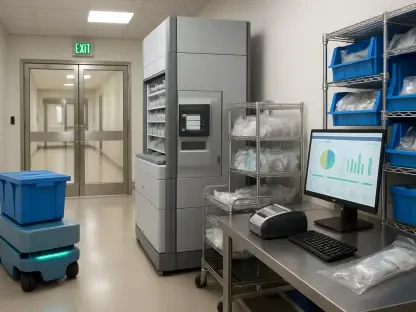The issue of how telehealth can maintain remote access for prescriptions of controlled substances has become increasingly pressing as the year unfolds. In the backdrop of this urgency is an entire community of professionals advocating for well-defined rules on telehealth practices before pandemic-era allowances come to an end. These allowances, largely established during the COVID-19 pandemic, permitted clinicians to prescribe medications without in-person consultations, ensuring continuous healthcare access during challenging times. However, with these provisions nearing expiration, there is considerable apprehension among practitioners regarding potential disruptions to patient access and care continuity. Understanding the intricacies of this situation is essential for appreciating why healthcare leaders are pushing for a thoughtful regulatory framework to guide the future use of telehealth in prescribing controlled substances.
Need for a Strong Regulatory Framework
Pandemic-Era Flexibility and Its Influence
The pandemic undeniably transformed the landscape of healthcare delivery, forcing providers to innovate rapidly to maintain access to essential services. One such innovation was the temporary ease on telehealth-based prescriptions, which proved critical for many patients needing controlled substances. This flexibility allowed providers to prescribe medications remotely, bypassing the customary requirement for in-person meetings. As these allowances are set to expire, concerns mount regarding how this could affect patients reliant on remote healthcare access. Advocates are urging regulatory bodies to develop permanent policies that reflect the modern healthcare environment. Their primary argument hinges on the sustained importance of telehealth services, stretching beyond emergency provisions to become integral in everyday medical practices.
Collaboration and Stakeholder Engagement
Efforts in formulating enduring telehealth regulations have underscored the necessity of stakeholder involvement. Historical challenges have illustrated the pitfalls of taking unilateral steps without broad stakeholder input, resulting in increased administrative burdens and inconsistent practices. Recent letters from telehealth organizations to DEA administrators highlight the crucial role of collaboration in policy-making, suggesting that involving experts and stakeholders will prevent overlooked issues. Such engagement could pave the way for nuanced policies that deliver thorough oversight yet do not impose unnecessary constraints on healthcare processes. Importantly, this collaborative approach would involve addressing valid concerns without stymying innovations that promote health system efficiency.
Balancing Access with Regulation
Ensuring Patient Access While Preventing Misuse
Creating a regulatory balance between patient access and controlled substance oversight remains a challenging yet unavoidable task. Telehealth’s capacity to bridge the gap between patients and healthcare, especially in underserved regions, demands that its policies not inadvertently limit access to required medications. While the ease in regulation has led to broad connectivity, it poses risks of potential misuse. Instances of legal challenges faced by telehealth companies accused of overprescribing illustrate these pitfalls, necessitating strict yet not prohibitive regulatory measures. Strategies such as vigilant monitoring of state drug databases and stringent checks on prescriptions are proposed as possible solutions that sustain access while ensuring security compliance.
Legal Challenges and Lessons Learned
Legal precedents have shaped perspectives on telehealth’s role. Some companies encountered legal challenges due to supposed drug overprescription issues, emphasizing the need for a balanced approach. This context is essential for formulating practices that permit remote prescriptions while safeguarding against potential diversion or misuse of controlled substances. These lessons from legal hurdles inform current discussions and plans, underscoring the dual necessity of inclusivity in healthcare service provision while preserving safety and compliance. Public discourse increasingly highlights that telehealth can only fulfill its potential as an access-enhancement tool if accompanying regulations remain both stringent and adaptable.
Ongoing Policy Extensions and Their Impact
Historical Context and Policy Extensions
The timeline of policy extensions provides insight into regulatory dynamics. Initially set to expire in 2023, allowances extended into 2025 indicate an ongoing struggle to establish a definitive regulatory framework. This lack of clarity creates a perpetual limbo for provider organizations and patients who rely on remote healthcare solutions. The continuous extensions reveal a broader recognition of telehealth’s importance in healthcare delivery, suggesting the need for permanent guidelines to safeguard telehealth as a viable option. These signals of recognition bear implications for telehealth’s role in extending healthcare beyond traditional boundaries, particularly in areas poorly served by conventional healthcare infrastructures.
Proposal of Special Registrations
In efforts to remedy the regulatory uncertainties, early 2025 witnessed the DEA’s proposal for special registrations allowing practitioners to prescribe controlled substances remotely under rigorous conditions. Integral to these propositions are enforced checks utilizing state drug monitoring programs and controlled prescriptions. Yet, feedback from telehealth entities flagged these proposals as potentially onerous and restrictive to access. The concerns raised highlight the critical need for policies that succeed in mitigating potential misuse yet do not incapacitate healthcare providers with arduous requirements. Striking this balance—of accessibility without lapsing into regulatory exhaustion—emerges as a central tenet in the current telehealth dialogue.
Delays and Implementation Challenges
Progress in Rule Establishment
Despite notable strides toward establishing permanent regulatory rules, certain proposals have faced implementation delays, affecting the broader telehealth landscape. For example, finalized rules on buprenorphine prescription, fundamental for opioid disorder treatment, encountered postponement, reflecting wider struggles. Such delays underscore the imperatives of regulatory clarity to enhance telehealth’s role and capacity. These pauses in endeavors also caution against hastily applied edicts, advocating instead for comprehensive analyses to refine approaches that favor health access without undue impediments. Understanding these challenges within a historical context reinforces why thoughtful strategies are necessary for telehealth’s stabilized integration into healthcare norms.
Continued Struggles Toward Regulatory Solutions
The quest for a balanced regulatory framework is not without its setbacks. Regulatory hindrances, procedural complexities, and legal uncertainties exemplified by postponed rule enforcement portray the challenging landscape awaiting productive resolutions. These ongoing struggles call for continued discussions to devise informed avenues promoting healthcare delivery innovations through telehealth. As regulators grapple with enabling equitable access while instituting necessary protections, the balancing act progresses amidst evolving healthcare needs and technological capabilities.
Conclusion: Shaping the Future of Telehealth
Balancing regulatory frameworks to ensure patient access while overseeing controlled substances is a complex yet essential task. Telehealth, with its ability to connect patients to healthcare services, especially in underserved areas, requires policies that do not inadvertently restrict access to necessary medications. Despite the connectivity advantages due to relaxed regulations, there are risks of misuse. Telehealth companies have faced legal challenges for alleged overprescribing, demonstrating these risks and highlighting the need for a regulatory approach that is strict but not overly restrictive. Potential solutions include rigorous monitoring of state drug databases and implementing strict checks on prescriptions. These strategies aim to maintain patient access to necessary treatments while ensuring adherence to security and regulatory standards. A balanced approach is crucial, fostering both access and accountability. Such measures can help protect the integrity of telehealth while providing patients with the medications they need.









